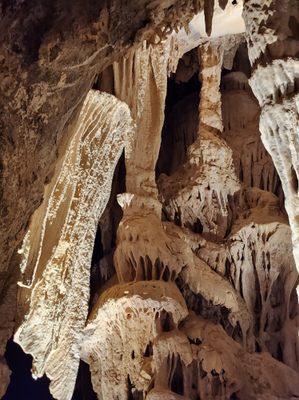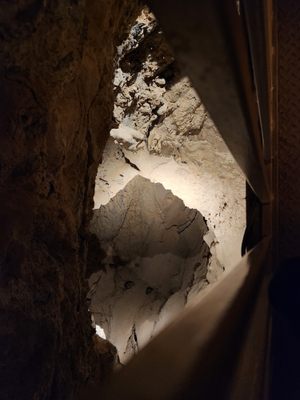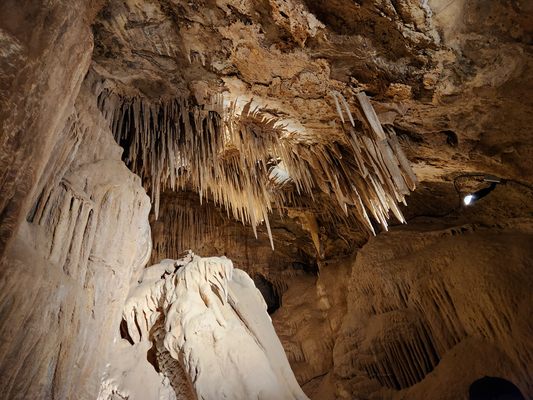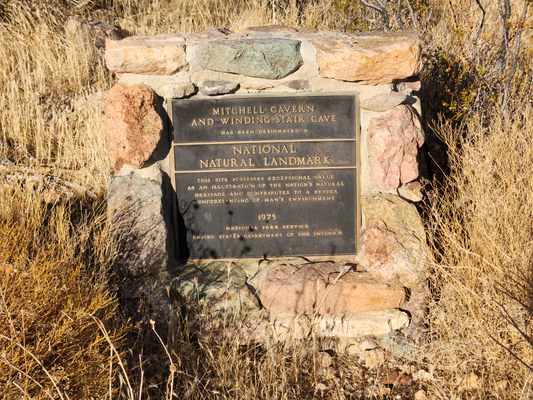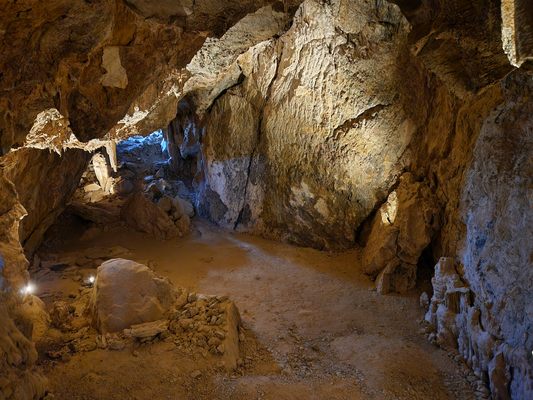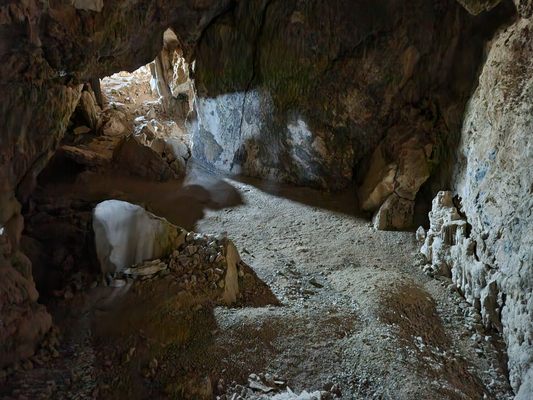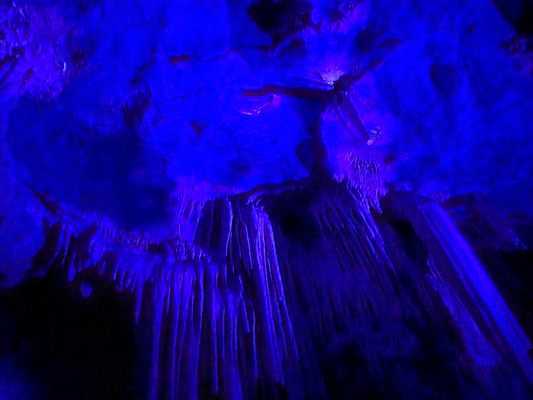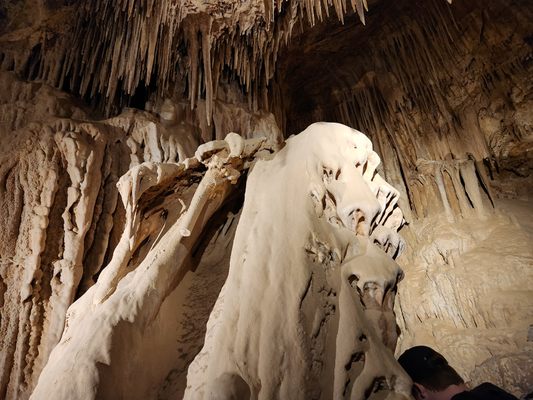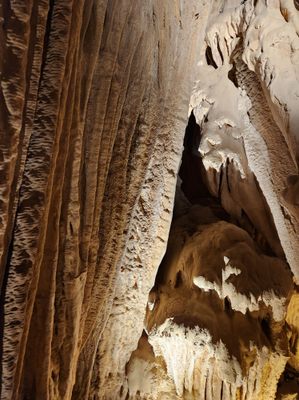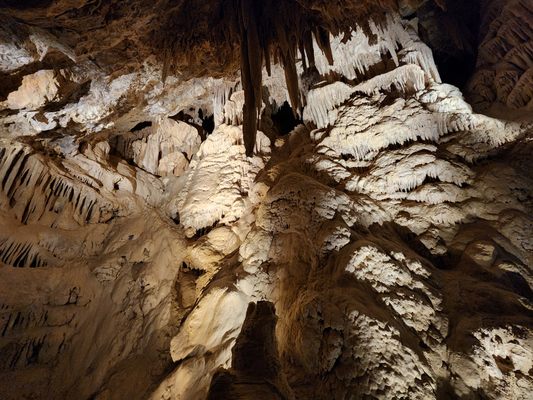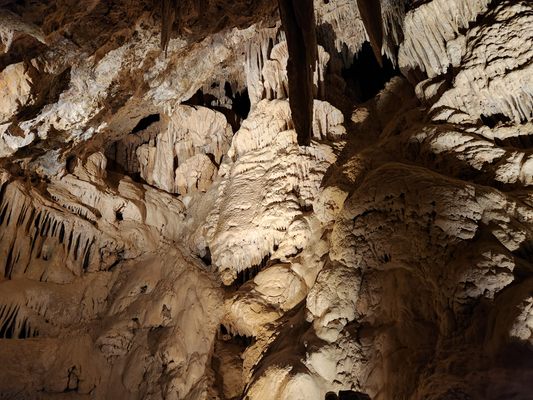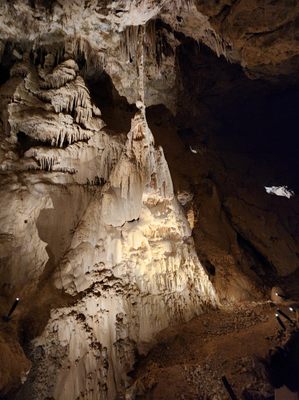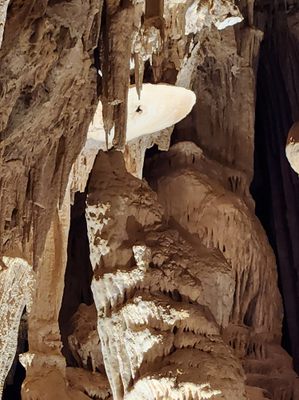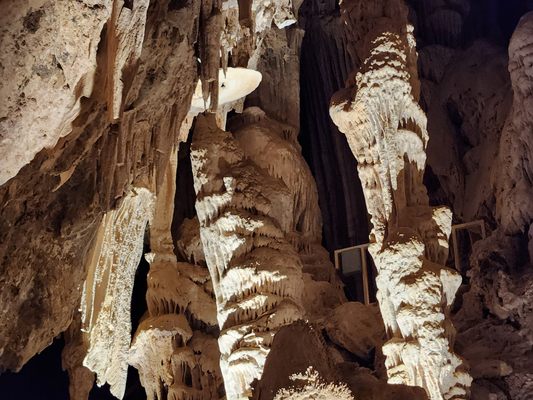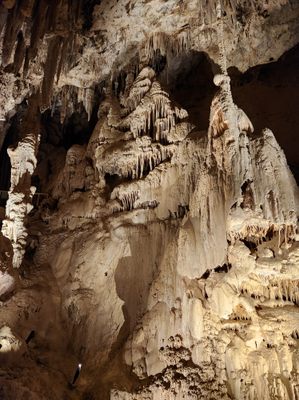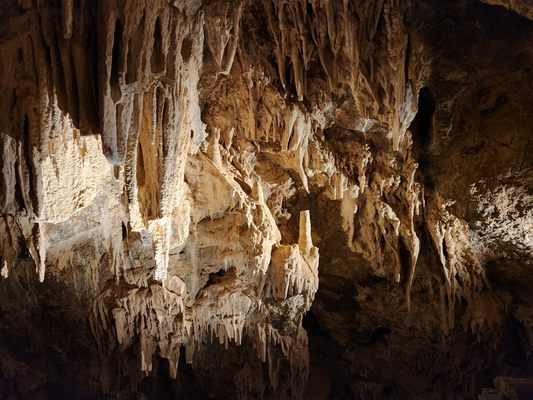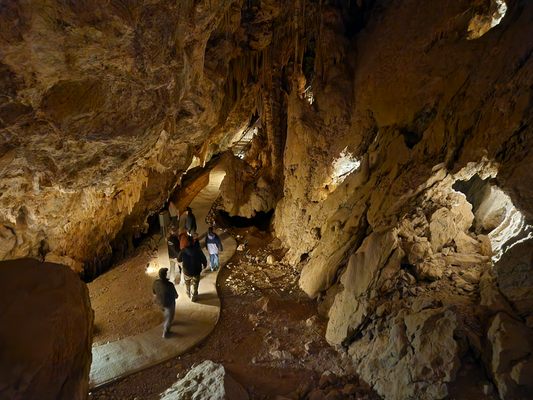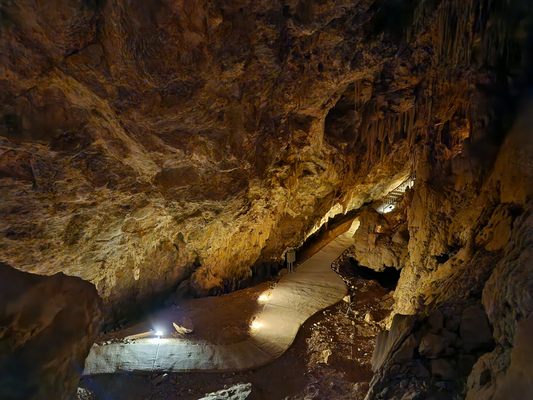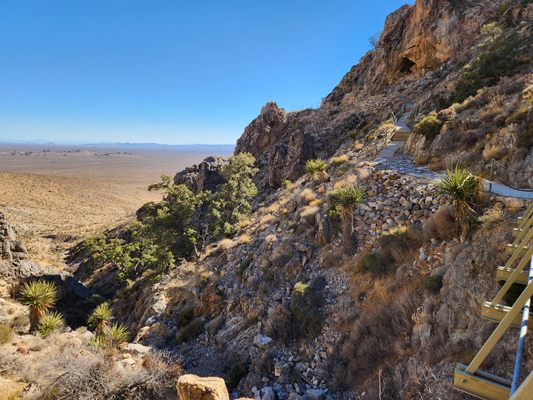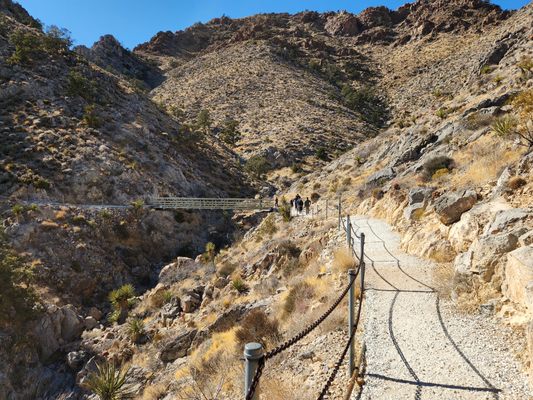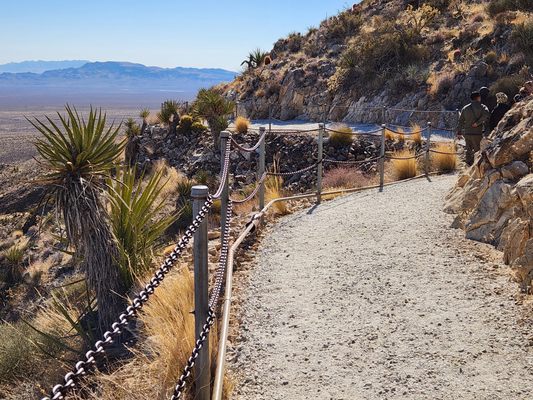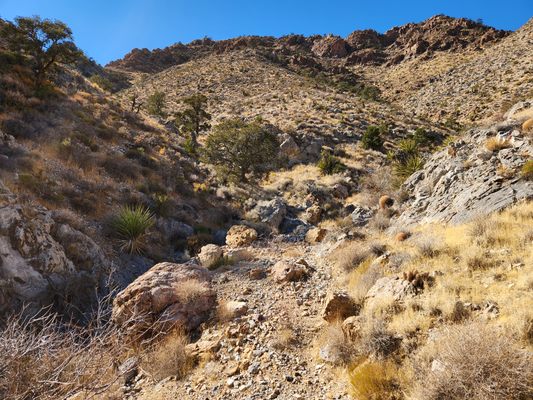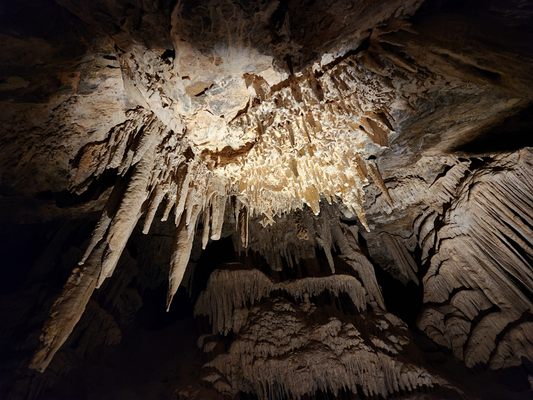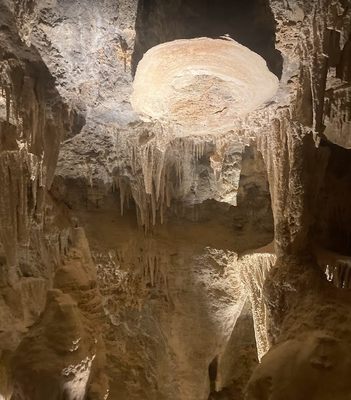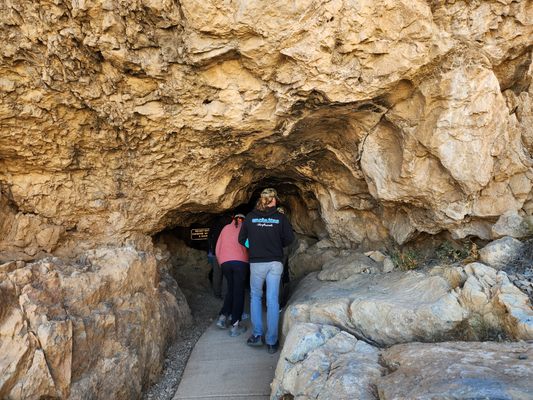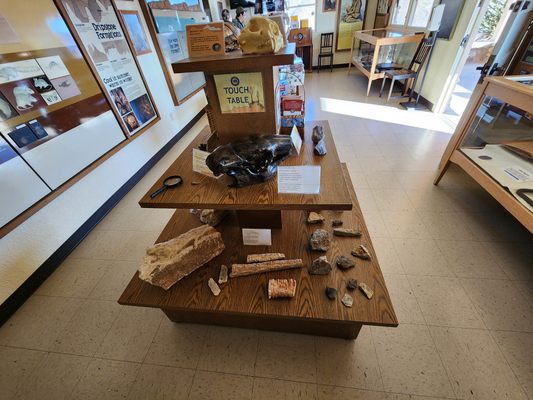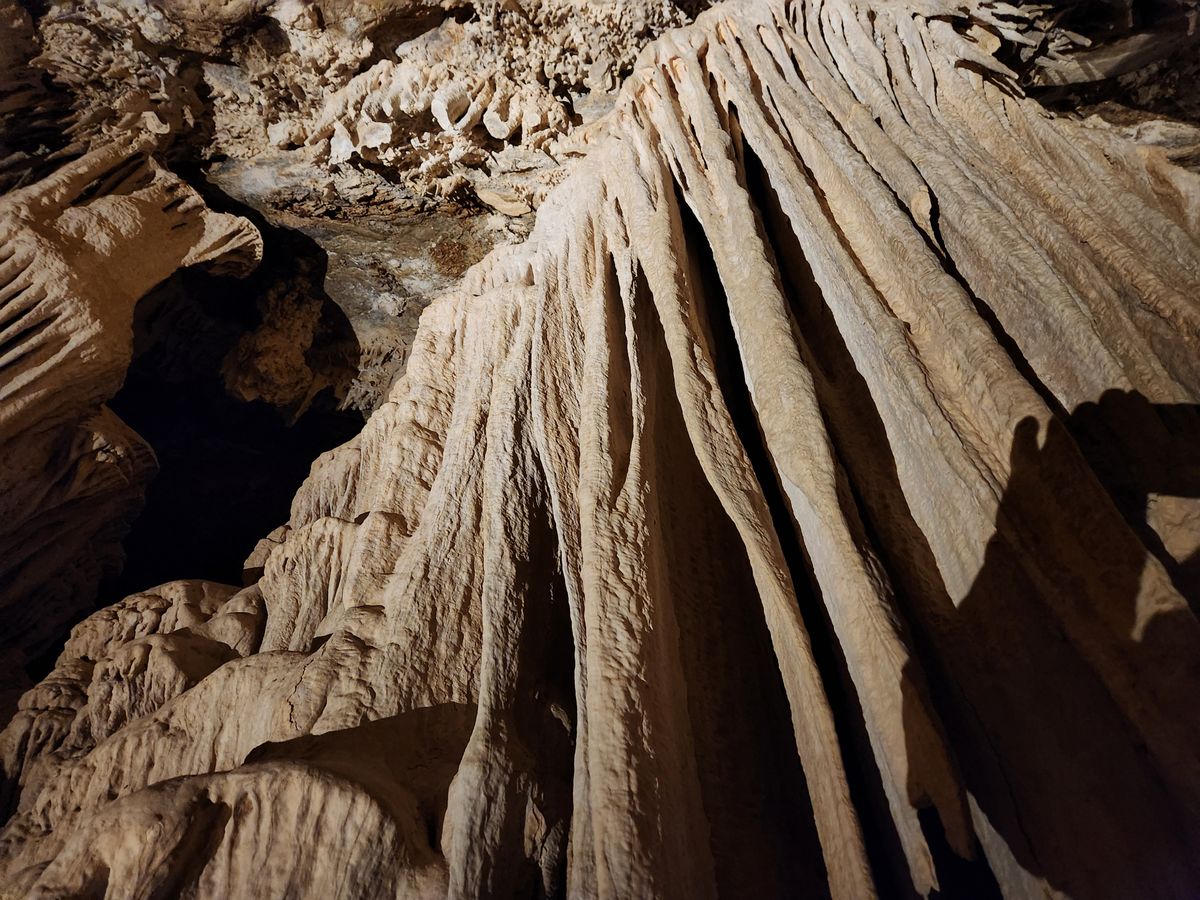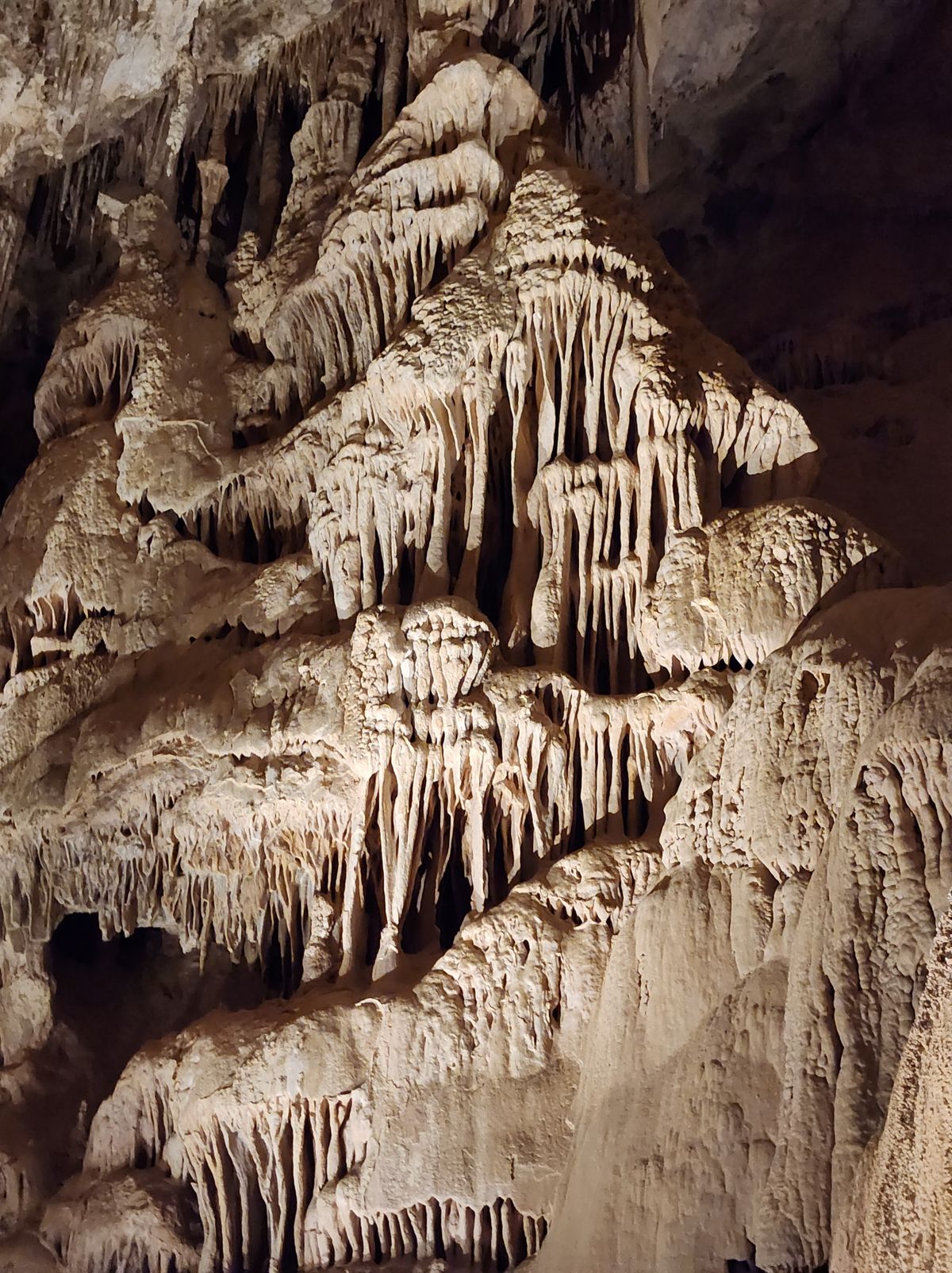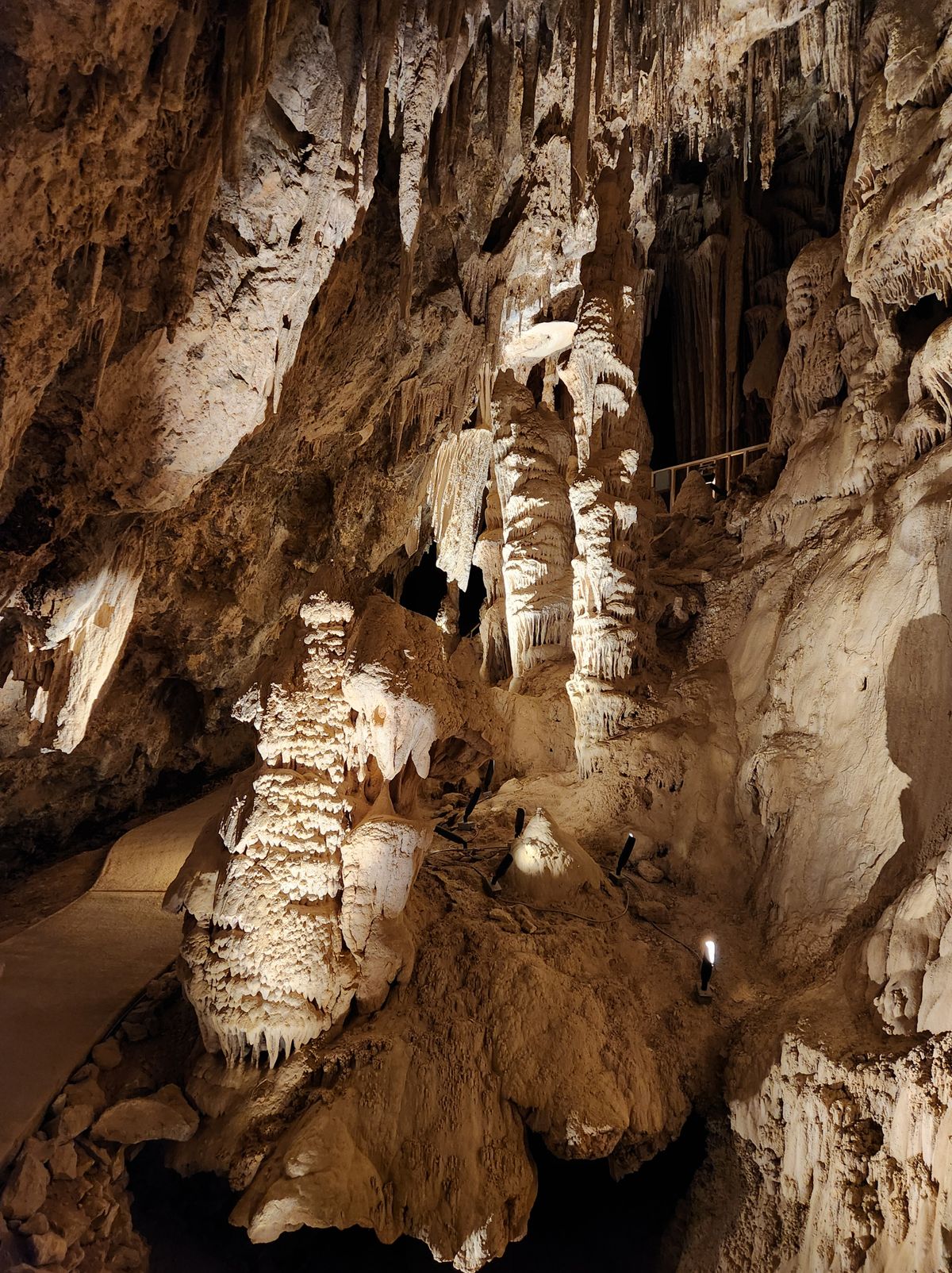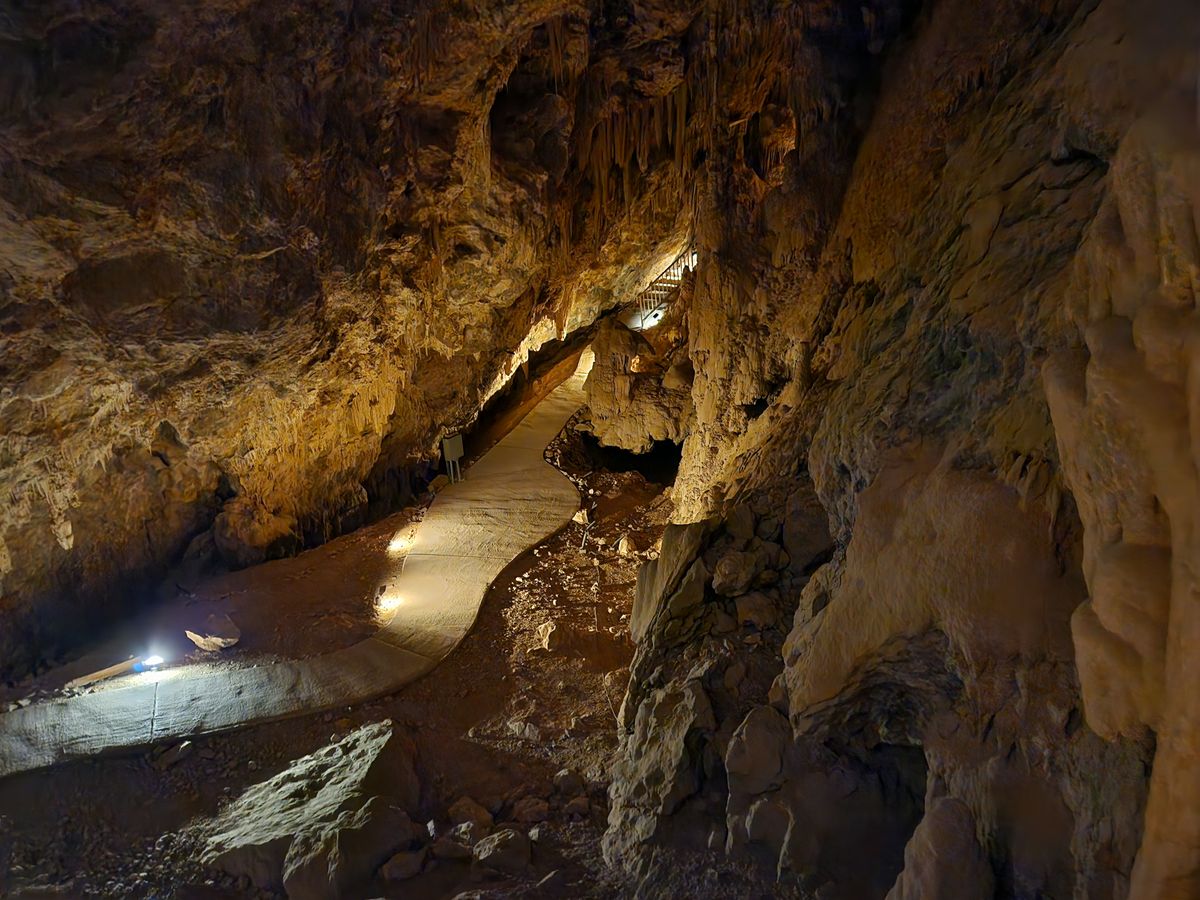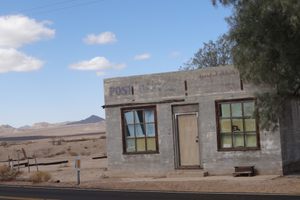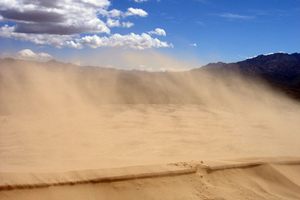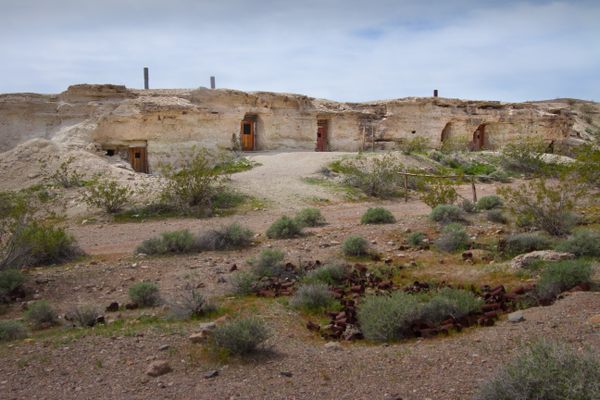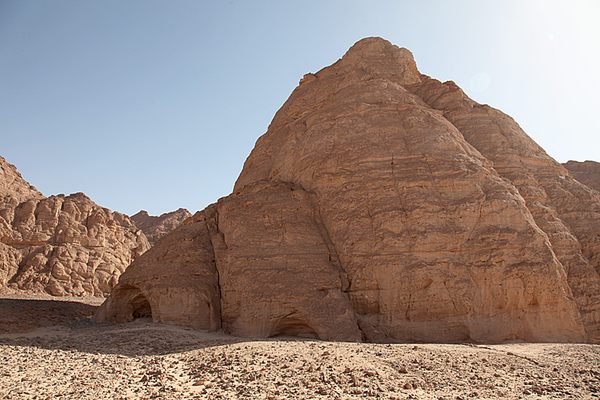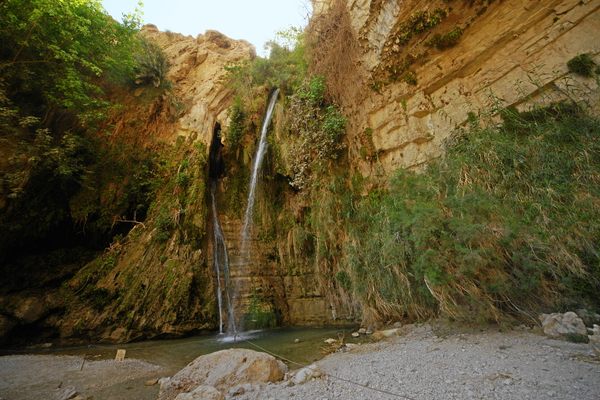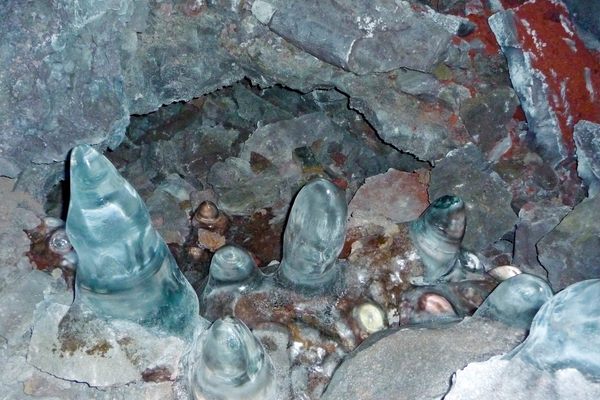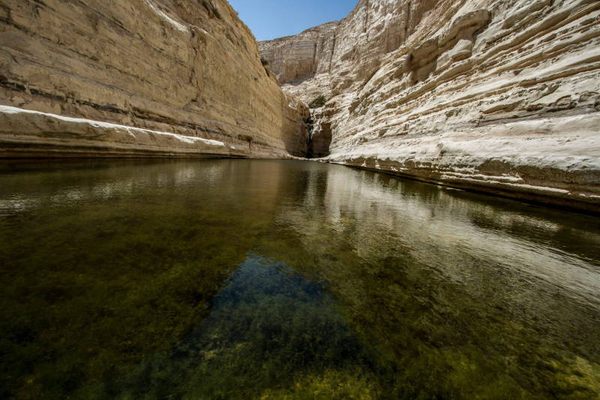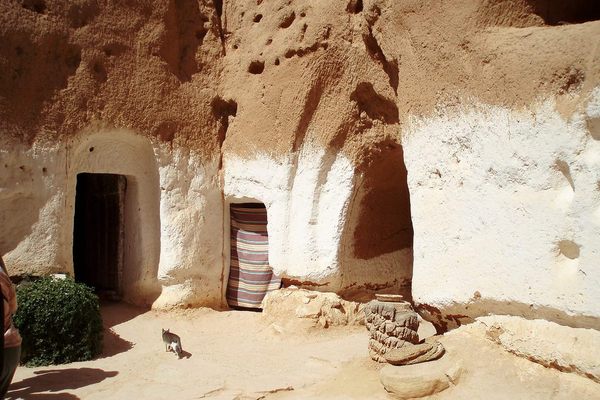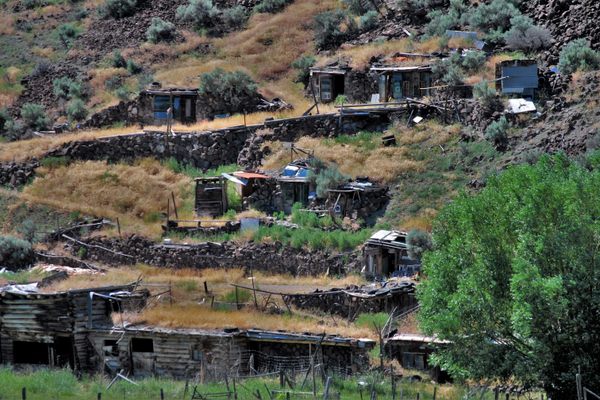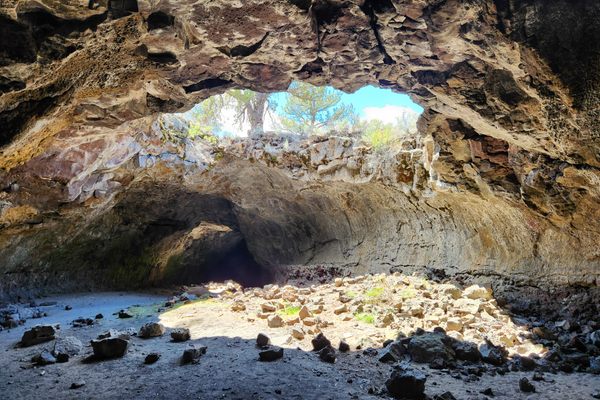About
The eastern Mojave Desert contains lots of disrupted pieces of ancestral North America, including outcrops of ancient Paleozoic limestone. In the Providence Mountains, late Paleozoic limestone of the Bird Spring Formation (250-300 million years old) hosts impressive caverns formed about 12 million years ago—much younger than the limestone itself, but considerably older than the recent Ice Ages that began 1.6 million years ago.
The caves were known to the local Chemehuevi, a southern Paiute branch. Jack and Ida Mitchell acquired them in the early 1930s after losing everything during the Great Depression. After first trying prospecting, Jack eventually developed the caverns as a tourist destination. He built a road to US 66 about 20 miles south (now Essex Road) and promoted the caverns as a rest stop for California-bound travelers. When the Mitchells retired in 1954, the caverns became part of the state park system, and they are now the centerpiece of the Providence Mountains State Recreation Area within the Mojave National Preserve.
Mitchell Caverns include two publicly accessible caves, El Pakiva and Tecopa, connected by a tunnel with an “airlock” consisting of two doors opened only during tours to preserve their environment. A third cave, Winding Stair Cave, consists largely of a vertical shaft and is closed to the public.
Although relatively small, the caves (especially El Pakiva) contain spectacular speleothems, formations deposited by percolating water containing dissolved calcium carbonate. These include stalactites, stalagmites, draperies, flowstone, and even more unusual forms such as helictites (where capillary forces have defied gravity to yield twisted straw-like features) and “shields” (disk-shaped deposits formed by solutions exiting linear cracks).
The Providence Mountains Recreation Area has more than just the caverns. With summits over 7000 feet, the mountains catch more rainfall than the surrounding lowlands, forming a “sky island” with more diverse and abundant vegetation than is typical in the Mojave. There is even a sparse pinyon pine forest in the higher elevations. Several hiking trails centered on the visitor center give the flavor of the mountain environments. The elevation of the recreation area also provides expansive views over the surrounding desert.
Related Tags
Know Before You Go
The Providence Mountains State Recreation Area is reached from the southeast by the paved Essex Road, which intersects Interstate-40 at Exit 100. It's about 15.5 miles to the state recreation area, where it dead-ends. As of this writing the recreation area is open from Friday through Sunday 8:00 a.m. to 5:00 p.m., with some closures on holidays and during the summer months. Check the website for details.
The caverns can be visited only as part of a guided tour. These are currently held at 11:00 a.m. and 2:00 p.m. on days when the recreation area is open. The number of people in the tour is limited; advance reservations are strongly recommended and are available online (check the website). A wide developed trail, about 3/4 mile one way, leads from the visitor center to the caves. Although the hike is only of moderate difficulty, visitors must be able to negotiate it, as well as several stairways within the caves themselves. The path is also not wheelchair accessible.
The State Recreation Area includes a small campground off the east side of the main parking lot, with two larger campsites at the edge of the parking lot suitable for bigger vehicles such as trailers. Flush toilets are also available at the parking lot. Campsites are available Friday and Saturday nights, and again advance reservations are strongly recommended. You can reserve online with the California State Parks reservation website. When the recreation area closes at 5:00 p.m. the access road is blocked with a locked gate, but if you have a camping reservation and are arriving late the rangers will text the code for unlocking the gate.
No dogs are allowed on the cave tour or the hiking trails, but they are OK in the campground.
Published
April 7, 2025

